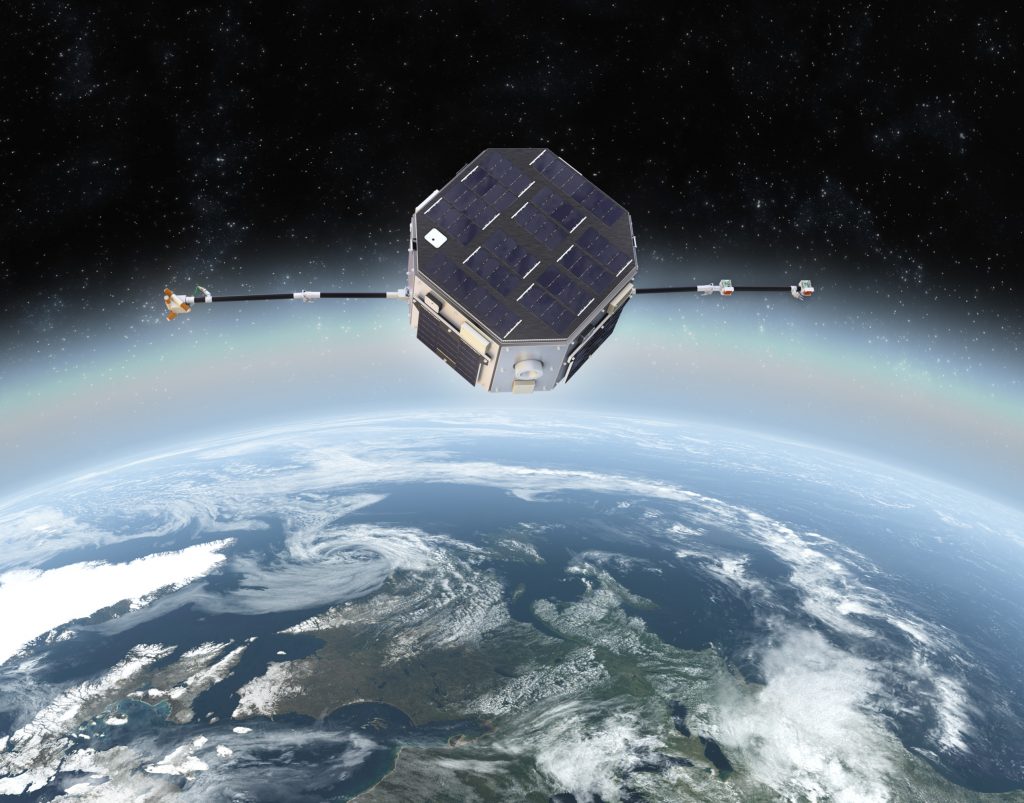The RADiation Impacts on Climate and Atmospheric Loss Satellite

The RADiation Impacts on Climate and Atmospheric Loss Satellite (RADICALS) will be a low-Earth orbiting satellite mission investigating the transport of space radiation into the atmosphere, and its impact on Earth’s climate. Accurately quantifying the climatic response to anthropogenic forcing, and constraining models of future trends, urgently requires the comprehensive measurements enabled by RADICALS. RADICALS will therefore be unique space-based laboratory infrastructure with high-impact science goals, offering a “made-in-Canada” solution to high-priority international science questions, strategically aligned with Federal Government and international research needs. Exploiting and enhancing niche institutional Canadian capacity, the RADICALS will collect novel data, addressing open questions relating to the response of the coupled geospace system to solar forcing. The exploration of space with the RADICALS mission will also enable research into and have potential applications for examining potentially catastrophic space-weather radiation effects on satellite infrastructure and assessing space weather-related interruptions to high frequency radio communications and Global Navigation Satellite Systems. The RADICALS project will strengthen existing, and foster new, national and international partnerships; support student and professional training for the exponentially growing NewSpace sector of the aerospace economy; promote active integration of its data into climate and space-weather modelling; and be a trail- blazer for potential new operational space-weather products and services. Overall, the mission will be a radical voyage of discovery in the coupled space-climate system.
Scientific Motivation
The RADiation Impacts on Climate and Atmospheric Loss Satellite (RADICALS) Mission will address and close some of the highest priority and outstanding open questions in space physics: specifically which processes control the precipitation of space radiation into the atmosphere below, and what are the resulting potential impacts on climate? Until recently, the related climatic effects were assumed to be small. However, recent research has demonstrated that these previously ignored effects may have very important impacts on this highly coupled space-climate system. Understanding climatic change is one of the most important challenges of our time. The RADICALS mission will enable an innovative, Canadian-led exploration of this new research frontier.
The Sun is responsible for providing the energy for life on our planet. Interestingly, the Sun is also strongly coupled to the geospace environment through a complex relationship between the solar atmosphere, interplanetary space (the heliosphere), and the ionized and neutral atmospheres of the magnetized planets. Whilst a number of these coupling pathways are relatively well-understood, such as through direct coupling arising from electromagnetic emissions from the Sun, others require network level measurements and dedicated modelling to understand the relevant connections and causal linkages. For example, solar-terrestrial coupling in the ionosphere-thermosphere-magnetosphere (ITM) environment comprises a complex set of highly coupled systems, which are influenced by different effects pathways from the sun:

Mission Design
The RADICALS will be launched as a secondary payload into polar low Earth orbit (LEO), nominally into a near-sun-synchronous orbit (SSO) at a nominal altitude of around 550-600km. This will provide coverage of the Van Allen radiation belts four times, and SEPs in the polar caps and at equatorial latitudes twice, per approximately 90-minute orbit. To provide coverage in multiple magnetic local times (MLT), the orbital plane would need to drift slowly away from a purely SSO. Whether the RADICALS can be injected into an actively drifting orbit will be determined by the eventual selection of the launch provider. The specific MLT of an optimal single orbital plane, if that is the only orbit option available on a reasonable timeframe and within the target launch window, is to be traded during trade studies during the early phases of mission implementation.
The RADICALS will be designed to be spin-stabilized in a Thomson spin, with its spin vector perpendicular to the orbital plane. This will allow RADICALS to measure the pitch angle distributions of both MEE and SEPs, such that the relative impacts can be compared and assessed head-to-head. The mission will also measure the Bremsstrahlung X-rays produced by MEE, giving a spatially resolved image of the EPP. Such research is only in its infancy and the relative impacts are yet to be properly quantified.





This project is undertaken with the financial support of the Canadian Space Agency.